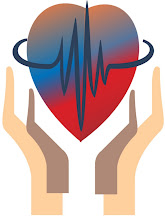Broken Collarbone
The collarbone is considered part of the shoulder. It helps connect the arm to the body. The collarbone lies above several important nerves and blood vessels. These vital structures are rarely injured when the collarbone breaks. The collarbone is a long bone, and most breaks occur in the middle section.
One of many types of distal clavicle fractures.
(Reproduced with permission from Nuber GW, Bowen MK: Acromioclavicular joint injuries and distal clavicle fractures. J Am Acad Orthop Surg 1997;5:11-18.)
Because the collarbone doesn't completely harden until a person is about 20 years old, a child's collarbone can easily break from a direct blow or fall.
In athletes, the force of a fall can be transmitted from the elbow and shoulder to the collarbone, causing it to break.
- Sagging shoulder (down and forward)
- Inability to lift the arm because of pain
- A grinding sensation if an attempt is made to raise the arm
- A deformity or "bump" over the fracture site
There is usually an obvious deformity, or "bump," at the fracture site. Gentle pressure over the fracture site will bring about pain. Sometimes, a grinding feeling can be felt when the patient tries to raise the arm. Although a fragment of bone rarely breaks through the skin, it may push the skin into a "tent" formation.
The doctor will carefully examine the shoulder to make sure that no nerves or blood vessels were damaged. An X-ray is often done to pinpoint the location and severity of the break.
Most broken collarbones heal well without surgery.
A simple arm sling can usually be used to immobilize the arm. A child may have to wear the sling for 3 to 4 weeks; an adult may have to wear it for 6 to 8 weeks. Depending on the location of the break, your physician may apply a figure-of-eight strap to help maintain shoulder position.
Analgesics such as acetaminophen or nonsteroidal anti-inflammatory medications, such as aspirin or ibuprofen, will help reduce pain.
A large bump will develop as part of the healing process. This usually disappears over time, but a small bump may remain.
After the bone has healed normally, shoulder function generally returns with time. The result is little, if any limitation, unless the fracture was widely displaced (the parts of the broken bones are separated a lot.
Range of motion and strengthening exercises can begin as soon as the pain subsides. Sports activities should not be started until full shoulder strength returns.
Last reviewed and updated: August 2007
AAOS does not review or endorse accuracy or effectiveness of materials, treatments or physicians.







